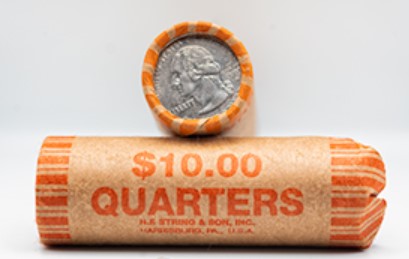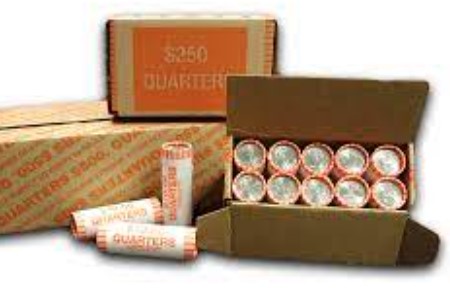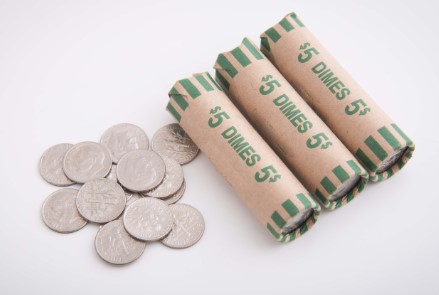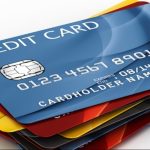This article will explore all about How Many Quarters In A Roll? The Federal Reserve Bank of the United States is this country’s coinage source. The Federal Reserve Bank purchases its coins in bulk in enormous “ballistic bags” that can store several thousand pounds of coins from the United States Mint.
These coins are stacked into conventional sizes according to the denomination to make handling and distributing them to nearby institutions easier.
Big banks process a lot of coins. Commercial entities like retailers deposit a significant amount of these coins, while some are brought in by customers who want to deposit them.
These coins must be handled, stacked, and rolled in a conventional or shotgun coin roll for simpler inventory and accounting purposes. The Federal Reserve Bank does not distribute any other quantity per roll.
Table of Contents
How Many Quarters In A Roll?
There are 40 quarters in each roll, as you already know if you answered the bonus question above.

How Many Quarters In A Box?
Transferring quarter rolls is simple if you only have a small number. However, the U.S. Mint and Federal Reserve Bank deal with millions of quarters daily. Rolls are assembled into quarter-boxes for this task. Fifty rolls of quarters are included in a typical box of quarters. One box of quarters has 2,000 quarters with a value of $500 and has 50 rolls with 40 individual quarters each.

Where Do Coin Rolls Come From?
The United States Mint produces coins, while the Federal Reserve System distributes the currency inventory to banks. Coin rolls are a convenient technique to manage the enormous amount of coins in the banking system. Standardized rolls in particular denominations make sorting, stacking, tracking, and delivering coins across the nation easier.
History Of Coin Rolls
Although we have not found out who utilized coin rolls originally, we know who created the first machine to roll coins. Charles S. Batdorf developed a coin-wrapping machine to expedite coin handling and bookkeeping in 1913.
In the early 1900s, sorting, counting, and transporting individual coins began to overburden banks; as a result, the coin-wrapping machine quickly became the acknowledged standard procedure across the nation. Coin rolls have been documented considerably earlier than Batdorf’s coin-wrapping machine. Rolls and stacks of coins were discovered in shipwrecks.
Where Can I Get Rolls Of Coins?
The local bank is the greatest location to purchase rolls of coins. Any coin you’re looking for will be available in plenty, and if not, they may order it from the Federal Reserve.
You can select the sort of bank for your coin rolls in various ways. Because small and midsize banks collect their coin rolls from individuals, some coin collectors suggest them.

Others who collect coins advise going to larger banks in populated areas with a greater supply of coin rolls and no danger of anyone going through them owing to the sheer volume. Additionally, you can swap your dollar bills for coin rolls at local grocery stores, laundromats, arcades, and credit unions.
How Do Coin Rolls Enter Circulation?
Coin rolls are put into circulation in the US by the Federal Reserve Bank. Coins made by the United States Mint are delivered to the Federal Reserve Bank. These coins are piled by size and value before being given to banks.
When clients bring coins to be deposited, especially big deposits from establishments like stores, coin rolls are also put into circulation. Then, these coins are processed, rolled, and stacked to simplify inventory and accounting tasks.
How Much Is A Roll Of Quarters?
Each roll contains 40 quarters, for a total of $10 in quarters. Every regular roll of quarters (whether you buy a roll or roll it yourself) will contain exactly $10 since paper rolls for quarters are all the same size.
How To Obtain Rolls Of Coin From Your Bank?
Standard rolls of the coin can be easily or without much difficulty purchased at your neighborhood bank. Some banks only allow consumers to exchange paper money for rolls of coins. Additionally, you can be subject to restrictions or fees from some institutions when exchanging rolls of coins.
Keep in mind that banks are privately owned and are in the business of making a profit. The coin-rolling machines must be run by employees who are paid a decent wage. All of this raises the price of making coin rolls.
Developing a relationship with your bank is the simplest way to get rolls of coins from them. Get to know the manager and the bank tellers. It will be more difficult for you to regularly receive rolls of coins if your accounts and banking services are distributed across multiple banks. The bank may demand that you open a “commercial bank account” to get a lot of coin rolls.
Where Can I Find Paper Wrappers So I May Roll My Coins?
If you need coin wrappers, your neighborhood bank or other organization is usually more than happy to provide them if you ask. You may even receive the wrappers for free from some organizations. Additionally, you may buy coin wrappers in bulk from local shops, office supply stores, and internet merchants like Amazon.
What Is Coin Roll Hunting?
Coin collectors often like going on coin roll hunts. Coin roll hunting might be worthwhile if you have the knowledge to know which coins to look for or the time to investigate individual coin values. Coin roll hunters purchase rolls of coins to find valuable items such as old, uncommon, and mistaken coins.
Purchasing them at face value from banks is one way to find old and uncommon coins (such as Indian Head pennies or 90% silver dimes) in coin rolls. You can return undesired coins to the bank after looking for precious ones. To help you start your hunting, we’ve provided some advice on finding coin rolls.
- Inquire of bank tellers whether they’ve recently seen any rolls of older coins enter the bank and purchase any they may have.
- Look for penny rolls and half dollars. These typically have better chances of discovering rare coins.
- < UNK> To expedite your search, Check the outer edge for silver dimes or quarters without the orange or brown line. (Silver coins do not have the orange-brown stripe; only copper-nickel coins do.)
- Coins with dates that are well known to include problems should be placed aside while hunting for error coins. These include 1982 half dollars (without Frank Gasparro’s initials FG on the right of the eagle’s tail) and 1972 pennies (many of which were twice die that year). Examine each coin set aside after sorting through all the coins and separating the special years from the rest to look for mistakes.
What To Search For In Rolls Of Coins?
The list of coins worth more than their face value may be found in regular circulation coin roles.
- Penny. Wheat pennies are one-cent coins from 1958 and earlier.
- The nickel. The value of Jefferson’s nickels with a date between 1942 and 1945 can increase. Look for coins with a huge mint mark letter above a building on the back.
- Quarters and dimes. Numerous rare coins with dates of 1964 or before are available.
- Dollar halves. Save any Kennedy Half Dollars with a 1964 or earlier date and any coins with a 1965 to 1970 date.
- The presidential budget. Search for coins with no inscription around the edge. Each of these coins is valued at up to $150.
Conclusion
Here is the one-line answer to your question How Many Quarters In A Roll? You have 40 coins in the roll and exactly $10. To have a $20 value, you would need 80 quarters. Two rolls of quarters would be the equivalent.
You would need 200 quarters to have $50 in quarters. Four hundred quarters would equal $100 in quarters, so multiply that amount by two. Even when 40 quarters are wrapped up, it’s unlikely that your bank will take all of them at once. y
Frequently Asked Questions
How many quarters in a roll of $10?
One roll has 40 quarters, which is the same as ten dollars. When you multiply the 25-cent value of each quarter by 40, you get $10.
How many quarters are in 2 rolls?
A normal roll containing 40 quarters weighs around 8 ounces or half a pound. A pound can be filled with 80 quarters or two rolls (2 rolls * 40 quarters *.2 ounces equals 1 pound). For a $4000 face value, 2000 quarters weigh approximately 25 pounds, and 16000 quarters weigh 200 pounds.
Is a roll of quarters $20?
Each wrapper is marked with the coin value (quarter) and the value of one entire roll ($10). This indicates that a roll of quarters is worth $10 when fully loaded. The value of a coin (25 cents) may also be included on some rolls. The value of a coin is its face value when used as money.
What is called 1 quarter?
A quarter is one-fourth of a full number, denoted by 1 4 in mathematics. Three-quarters represent 143 or 34.

Muhammad Talha Naeem is a seasoned finance professional with a wealth of practical experience in various niches of the financial world. With a career spanning over a decade, Talha has consistently demonstrated his expertise in navigating the complexities of finance, making him a trusted and reliable figure in the industry.








